Invented by Mikkel Wandahl Pedersen, Allan Jensen, Per-Johan Meijer, Symphogen AS
The demand for anti-HER2 antibodies has been primarily driven by the increasing prevalence of HER2-positive cancers. According to the American Cancer Society, approximately 20% of breast cancer cases are HER2-positive. This has led to a growing need for effective treatment options that specifically target HER2. Anti-HER2 antibodies have emerged as a promising therapeutic approach, leading to a surge in research and development activities in this field.
One of the key factors contributing to the market growth is the success of existing anti-HER2 antibody drugs. Trastuzumab (Herceptin) was the first anti-HER2 antibody approved by the FDA for the treatment of HER2-positive breast cancer. Since its introduction, trastuzumab has revolutionized the treatment landscape for HER2-positive breast cancer patients, significantly improving their survival rates. This success has paved the way for the development of other anti-HER2 antibodies, such as pertuzumab (Perjeta) and ado-trastuzumab emtansine (Kadcyla), which have further expanded the treatment options available to patients.
In addition to the success of existing drugs, advancements in antibody engineering and formulation technologies have also played a crucial role in the market growth. Researchers have been able to optimize the structure and properties of anti-HER2 antibodies, enhancing their efficacy and safety profiles. This has led to the development of next-generation anti-HER2 antibodies with improved therapeutic outcomes.
Furthermore, the market for anti-HER2 antibodies has witnessed significant investment from pharmaceutical companies and biotechnology firms. These companies are actively engaged in clinical trials and collaborations to develop novel anti-HER2 antibody compositions and formulations. The aim is to create more potent and targeted therapies that can overcome resistance mechanisms and improve patient outcomes.
The market for anti-HER2 antibodies is not limited to breast cancer alone. Research is underway to explore the potential of these antibodies in other HER2-positive cancers, such as gastric cancer. This expansion of the target indications is expected to further drive the market growth in the coming years.
However, challenges remain in the market for anti-HER2 antibodies. The high cost of these therapies poses a significant barrier to access, particularly in developing countries. Efforts are being made to address this issue through the development of biosimilars, which are more affordable versions of the original anti-HER2 antibodies. Biosimilars have the potential to increase patient access to these life-saving treatments while reducing healthcare costs.
In conclusion, the market for anti-HER2 antibodies, compositions, and formulations is witnessing robust growth due to the increasing prevalence of HER2-positive cancers and the success of existing therapies. Advancements in antibody engineering and formulation technologies, coupled with significant investment from pharmaceutical companies, are driving innovation in this field. However, addressing the cost barrier and expanding the target indications are crucial for further market expansion and improved patient access to these life-saving treatments.
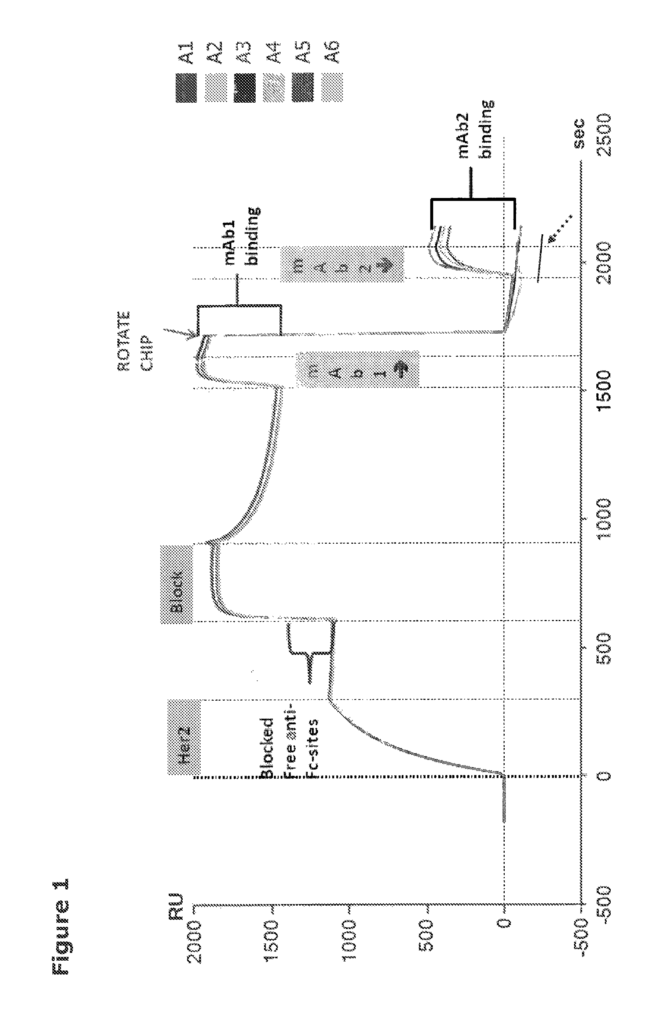
The Symphogen AS invention works as follows
The present invention relates both to new therapeutic antibodies directed against HER2(ErbB2) as well as recombinant monoclonal anti HER2 antibody compositions containing at least two of these recombinant anti HER2 antibodies. It also relates to the use of antibodies and antibody formulations in cancer treatment.
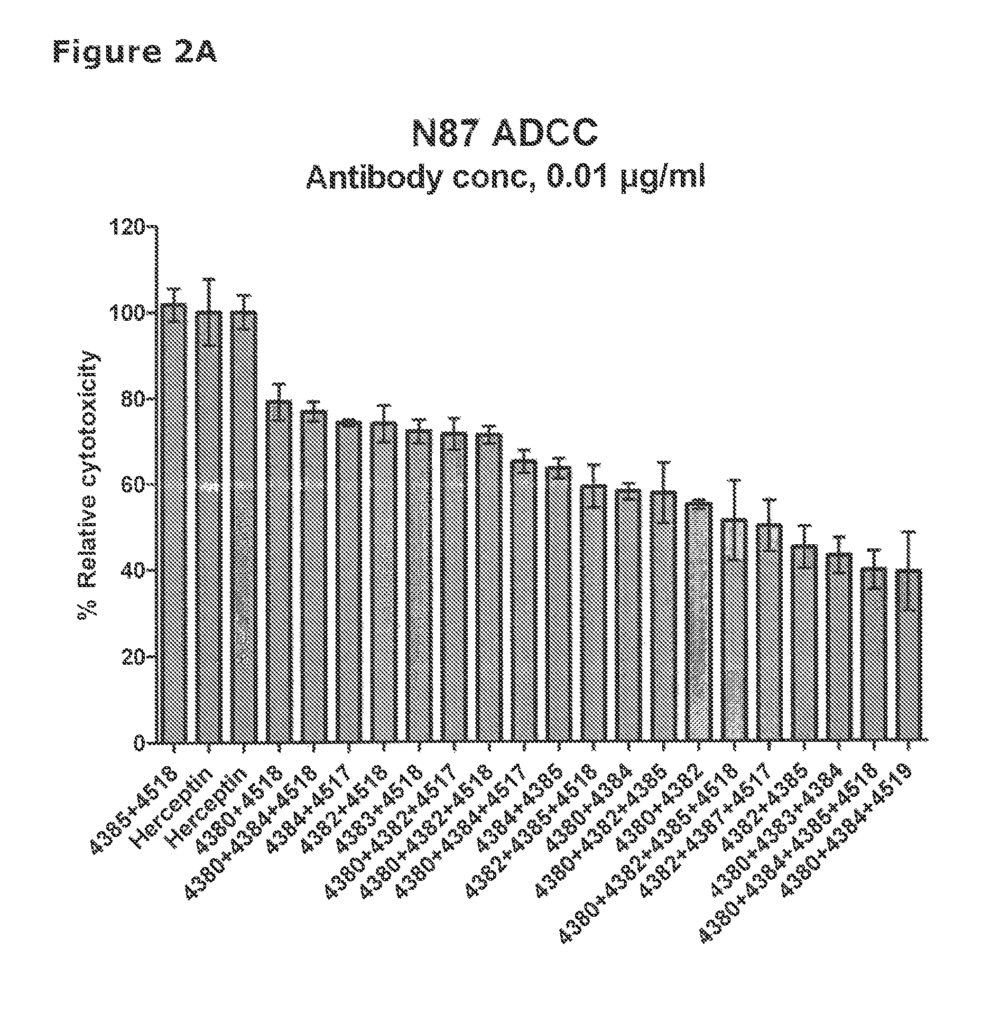
Background for Anti-HER2 antibodies, compositions and formulations
1. “1.
The present invention relates novel recombinant antibody targeting the HER2 receptor, and compositions containing two or more antibodies of this type for use in human chemotherapy.
2. “2.
The epidermal growth-factor receptor (EGFR), also known as the ErbB Family, is a subgroup within the receptor tyrosine kinases. It consists of four different members: EGFR/ErbB (also called ErbB), HER2/ErbB2, HER3/ErbB3 (also called ErbB3) and HER4/ErbB4. The members of EGFR are single-chain modular glycoproteins that have a ligand-binding region extracellular, a transmembrane and an intracellular tyrosine kinase. (Reviewed in Ferguson 2008 Annu Rev Biophys. 37: 353-373). In physiologically normal settings, the ErbB subfamily regulates important events in cell growth, differentiation and migratory coordination (Citri et. al. (2006) Nat Rev Mol Cell Biol. 7: 505-516). EGFR and HER2 are thought to play a crucial role in the malignant transformation and growth of cancerous cells. EGFR, HER2, and HER3 are overexpressed in many epithelial carcinomas (Slamon et. al. (1987) Science, 235: 177-182; Arteaga (2002) Oncologist 7 Suppl 4: 31-39; Bodey et al. Anticancer Res. 17: 1319-1330; Rajkumar et al. J Pathol. 179: 381-385). EGFR overexpression and HER2 have also been associated with disease progression, reduced survivability, poor response, and chemotherapy resistance in a number of human epithelial carcinomas (Slamon et. (1987) supra; Baselga et al. “(2002) Oncologist, 7 Suppl 4, 2-8.
Human Epidermal Growth Factor Receptor 2 (HER2, ErbB2 and Neu; UniProtKB/Swiss Prot No. “Human epidermal growth factor receptor 2 (HER2, also known as ErbB2 or Neu; UniProtKB/Swiss-Prot No. (1986) Nature 319. 230-234.
HER2 (the only member of ErbB’s family) does not bind to known ligands” (Klapper and al. (1999) Proc Natl Acad Sci USA 96: 4995-5000). HER2 instead is activated by heteromeric complexes formed with other ErbB members, and thus indirectly regulated via EGFR and HER3 ligands. Nat Rev Mol Cell Biol. 2: 127-137). HER2 is preferred heterodimerization partners of the other ErbB receptors. (1997) EMBO J 16: 1647-1655; Tzahar et al. Mol Cell Biol. Mol Cell Biol. Mol Cancer Res. 7: 275-284). Heterodimerization of HER2 and another ligand-bound receptor of the ErbB family induces cross-phosphorylation, leading to phosphorylation of the C-terminal amino acids. They serve as scaffolds to signaling molecules. (1988) EMBO Journal 7:1647-1651. Pinkas-Kramarski et. al. found that the HER2-HER3 heterodimer was the most active HER2 homodimer. (1996) EMBO Journal 15: 2452-2467). HER2 provides an active kinase to HER3, which is a kinase deficient HER3. (1994) Proc Natl Acad Sci USA 91: 8132-8136.). HER2, unlike EGFR is resistant to internalization (Hommelgaard et.al.). Mol Biol Cell, 15: 1557-1567 (2004). HER2 is able to escape lysosomal degrading and remains at the plasma cell membrane.
The primary role of HER2 appears to be modulation signaling initiated by a ligand bound ErbB receptor. HER2, like EGFR is primarily expressed in epithelial cell (reviewed by Freudenberg et. al. (2009) Exp Mol. Pathol. Pathol. J Mammary Gland Biol Neoplasia, 6: 7-21 (2001). As with EGFR, an excessive amount of HER2 at the cell surface can cause epithelial tissue to transform (Freudenberg et. al.). (2009) supra). The overexpression and amplification of HER2 have been observed in many human tumors including 20-30% invasive ductal cancers. This is well known as a predictor of poor outcomes with reduced survival rates. (1987) supra; Ravdin et al. (1995) Gene 159: 19-27). In human breast tissue that has not fully transformed but is showing early signs of transformation, high levels of HER2 are readily detectable. This indicates the importance of HER2 for the early malignant transformation. (2009) supra). High levels of the HER2 gene have been linked to other epithelial tumors, such as colorectal cancer, ovarian cancer, lung cancer, and urothelial carcinoma (Freudenberg, et. al. (2009) supra). Activation of HER2 induces uncontrolled proliferative activity, protects from apoptosis and disrupts the normal epithelial organisation (Muthuswamy, et al. (2001) Nat Cell Biol. 3: 785-792). Further, HER2 may be expressed by metastatic cancer cells and play a part in the motility of cancer cells (De Potter (1994), Hum Pathol. 25: 1264-1268).
Pertuzumab, which is still undergoing clinical trials is not yet known to what extent it will prove clinically beneficial. Trastuzumab has demonstrated clinical benefits, e.g. prolonged survival in connection with chemotherapy compared to chemotherapy alone, a majority of HER2 positive breast cancer patients were nevertheless found to be non-responders (45% overall response rate for Herceptin+chemotherapy vs. 29% for chemotherapy alone; Prescribing Information for Herceptin, Genentech, March 2009). Slamon et. al. describe similar results. In N Engl J Medicine (2001), 344(11),783-92 they also report that the combination Herceptin with chemotherapy led to a lower death rate at one year as compared to chemotherapy alone (22%, vs. 33%) and a longer survival median (25.1, vs. 20.3, P=0.046). Monoclonal antibodies directed against HER2 have been shown to improve treatment for e.g. There is still room for improvement in metastatic breast cancers with HER2 overexpression.
The present invention relates to new recombinant antigens that target the HER2 receptor, as well as compositions containing two or more antibodies. These compositions and antibodies can be used for cancer treatment in humans. For the treatment of cancers such as breast cancer, ovarian, gastric, and other cancers which overexpress HER2. The antibodies of the invention, compared to other cancer treatments, such as monoclonal anti-HER2 antibodies or other receptors in the EGFR/HER2 family, may provide a better clinical response, either alone, or preferably in a combination of two or more antibodies and, optionally, with other treatments, such as chemotherapy.
In one embodiment, this aspect of the invention relates a recombinant antibody molecule containing the heavy chain CDR3 sequence from any of the antibodies herein referred to as antibodies 4380/4381. 4382,4383. 4384. 4385. 4386. 4387. 4517,4518, and 4519. This aspect of the invention is based on a recombinant antibody molecule that contains the heavy chain CDR3 of any of the antibodies described here as antibodies 4380/4381. 4382. 4383. 4384. 4385. 4386. 4387. 4517. 4518. 4519.
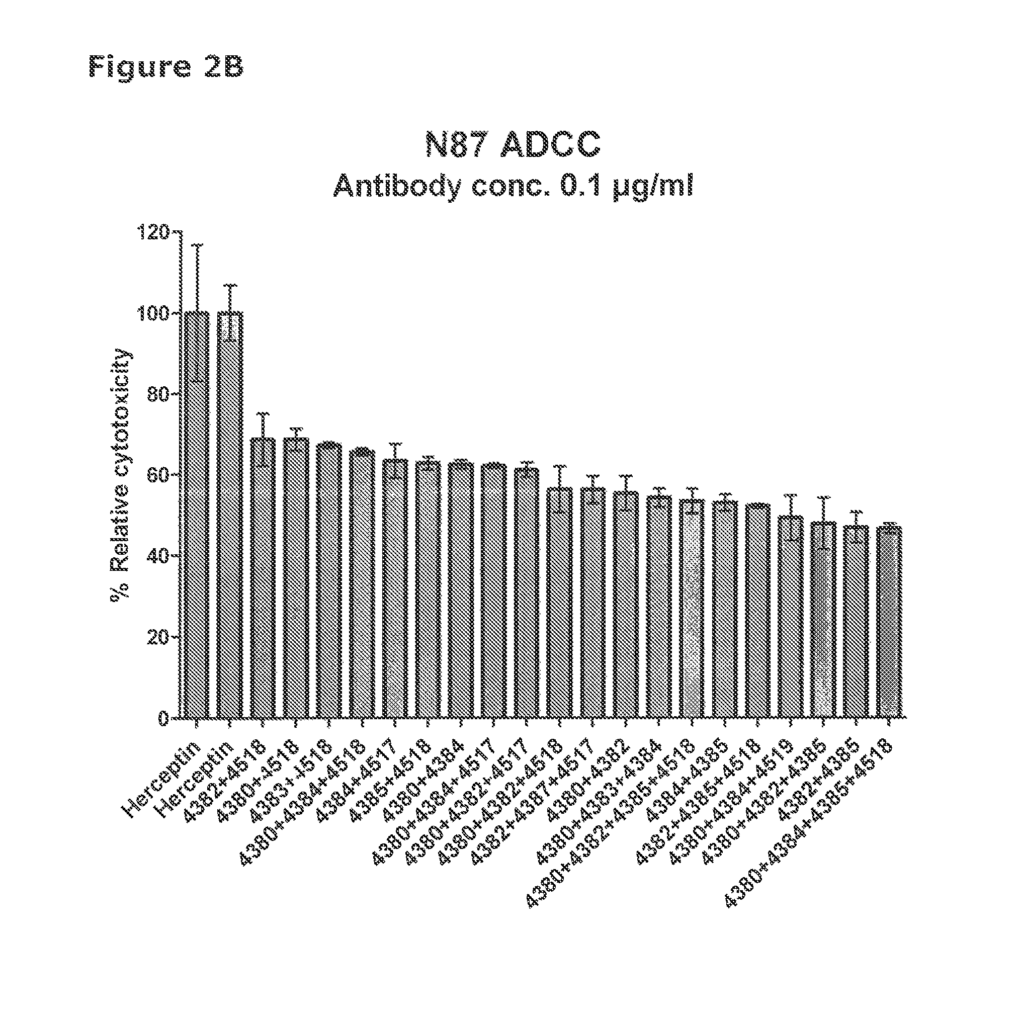
The invention also includes a recombinant anti HER2 molecule that comprises the heavy and light chains CDR1, CDR2, and CDR3 and heavy and light chains CDR1, CDR2 & CDR3 of one of the antibodies.
Another aspect” of the invention relates a recombinant-antibody composition that contains at least two recombinant antibodies against HER2, where the first antibody and the second antibody bind different epitopes on HER2, where one or both antibodies are chosen from the group described above.
Another aspect of the invention relates a recombinant, polyclonal, anti-HER2 composition that contains at least one, two, or three recombinant, anti-HER2 antigens that bind different epitopes on HER2, with the binding of first and second antibodies resulting in HER2 internalization and the binding of third antibody to HER2 resulting in inhibition of ligand induced phosphorylation by HER3.
An immunoconjugate comprising an anti-cancer agent conjugated with a recombinant HER2 antibody from the invention is a further aspect of this invention.” “A related aspect relates compositions comprising first and second anti-HER2 recombinant antibodies of the invention wherein atleast one anti-HER2 antigen in said compositions is an immunoconjugate.
Another aspect of the present invention relates to a polynucleotide containing a sequence of nucleotides that encodes the anti-HER2 antibodies of the invention as well as host cells transfected with an expression vector containing such a polynucleotide.
The invention also includes methods of producing polyclonal antibodies and compositions containing these antibodies.
A further aspect of the present invention relates methods of treating a disease, e.g. cancer in humans by administering anti-HER2 antibodies or compositions of the invention. One aspect of the invention is to use one or more anti HER2 antibodies for the preparation of a drug for treating a disease, whether in a human being or an animal. This includes the treatment of cancer.
Another aspect of the invention is a method of inducing the internalization of HER2 at the surface of cells which overexpress HER2, a method that involves contacting the cells using a recombinant antibody or immunoconjugate, or a composition of recombinant antibody anti-HER2 of the invention.
The description and examples will reveal additional aspects of the invention as well as particular embodiments.
BRIEF DESCRIPTION DES DRAWINGS
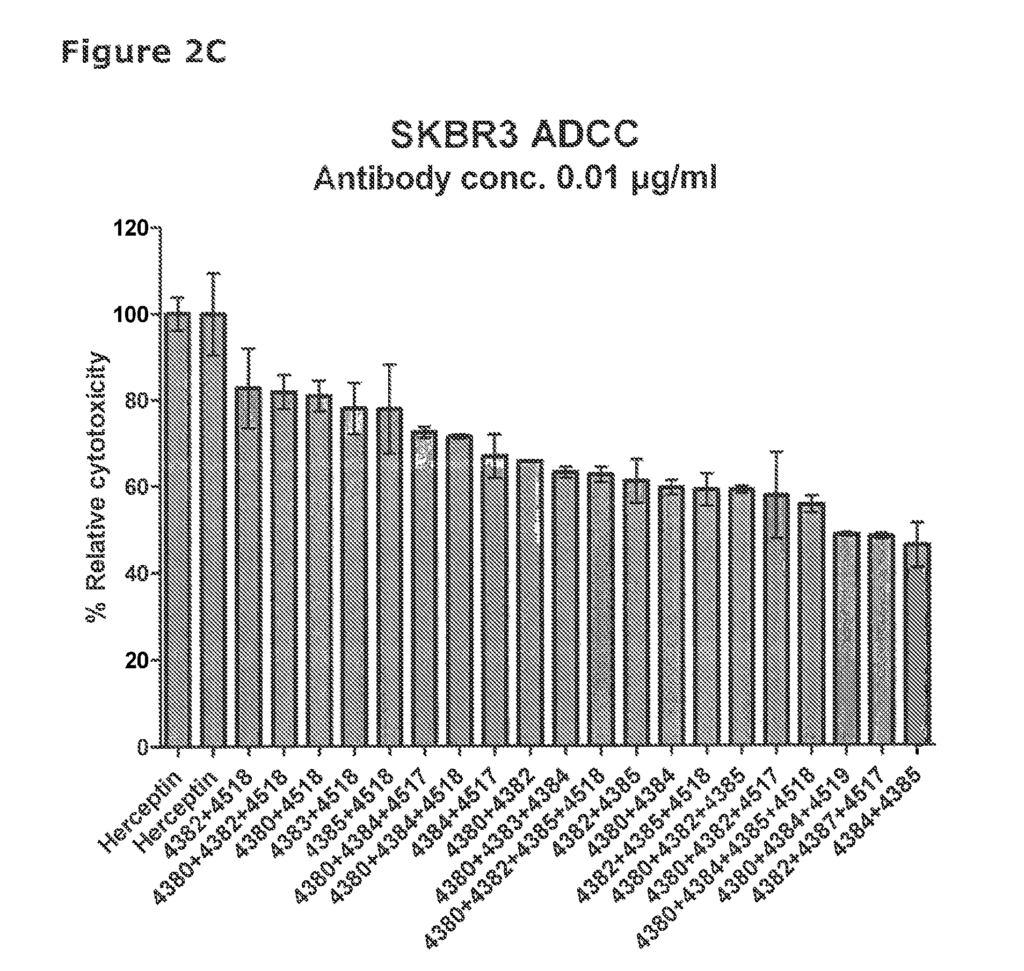
Click here to view the patent on Google Patents.
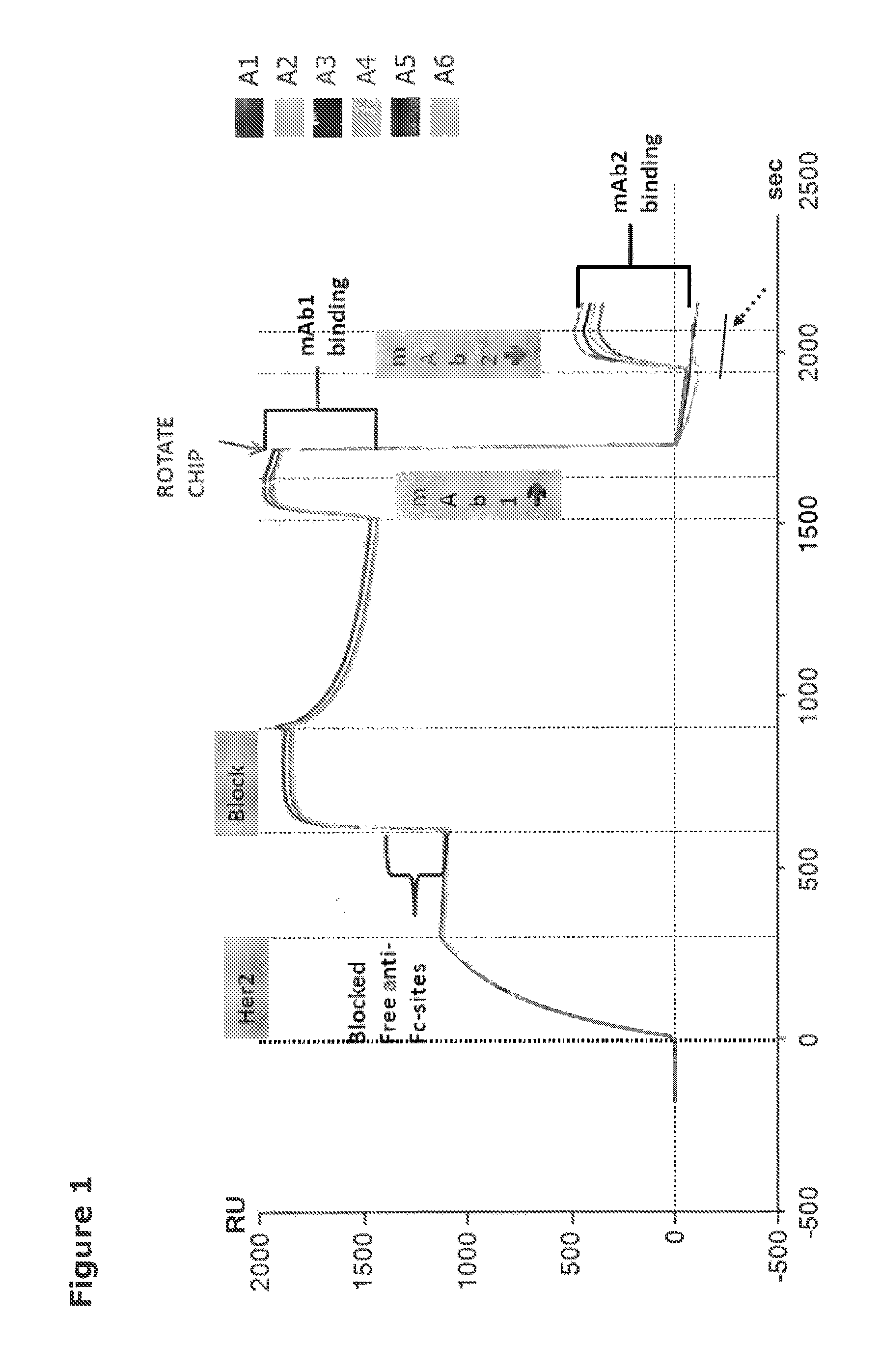
Leave a Reply